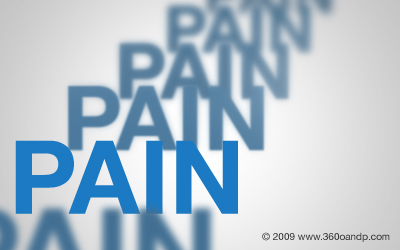
There are different types of amputee-related pain, from immediate post-operative pain to undue pressure on the residual limb during prosthetic use. The perception of pain can vary from person to person. Whether it’s burning, itching, throbbing, or cramping, pain can disrupt daily activities and sleep patterns. Pain can be periodic or chronic. Many amputees find themselves utilizing pain management physicians and dealing with an assortment of medications. Though standard pain medication can be beneficial and necessary, ‘natural’ alternatives to pain management can be an empowering and effective approach.
The most mystifying type of pain that amputees often experience is phantom limb pain. This is the perception of pain in the limb that has been amputated. Previously considered a psychological condition, the medical community now recognizes that phantom limb pain can be attributed to the disorganization of neurological pathways following amputation. In essence, the mind has a picture of the body and has a hard time drawing a new picture, so the energy can get misrouted.
Massage
A common type of amputee-related pain comes from hypersensitivity of the residual limb. One way to reduce this pain is to desensitize the residual limb to touch. Gently massaging a healed residual limb daily is a great way to reduce this type of discomfort. This is also an excellent way to prepare a new amputee for the use of a prosthetic limb.
Many lower extremity amputees experience back and hip pain that is exacerbated by poor walking patterns. These poor walking patterns are referred to as gait deviations. There are many causes for gait deviations, including poor training in the use of a prosthesis, and/or a poorly fitting, poorly designed prosthetic limb. Amputees who do not participate in physical therapy early in the rehabilitation process can simply develop bad walking habits, which can be difficult to break later in the rehabilitation process. Gait deviations put a tremendous amount of stress on the back, hips, residual limb and sound limb. Even if an amputee walks without significant gait deviations, that person will use more energy and experiences more stress to the body than a non-amputee.
Upper extremity amputees experience great stress to the back and often experience ‘overuse’ syndrome of the sound upper limb. These joints are put under an abnormal amount of stress. Muscles can become tense and shortened, resulting in poor range of motion and decreased activity capabilities.
Massage can stretch out shortened muscles, help reduce some contractures, and can relax muscles so that joints return to a more natural alignment. Applying certain pressures to hard, shortened muscles can restore blood flow, and can help release the lactic acid that tends to build in the stressed muscles.
Other Methods of Muscle Pressure Application
Meilus Muscular Therapy Method is a specialized method where a hand held robotic tools focuses on particular groups of muscles and pathways, applying targeted pressure for extended periods of time. Reiki, or the laying on of hands, is one form a massage where the physical pressure is not the objective. Reiki is more involved with the exchange of energy. Acupuncture is the application of pressure (many times incorporating needles) along certain energy pathways to reroute and release disorganized energy.
Chiropractic Care
In addition to muscle/tissue pain, many amputees experience a misalignment in the spinal vertebrae. Chiropractic care can re-align these skeletal structures and relieve undue pressure on nerves. An X-Ray is necessary in order to evaluate any misalignment. A consultation with the amputee’s regular physician and/or orthopedic surgeon can ensure a safe and holistic team approach.
Psychotherapy
Pain can sometimes be triggered or heightened when it is associated with a traumatic event. Even if the pain cannot be eliminated, the perception of the pain and the relationship the amputee has with the pain can change. Rapid Resolution Therapy is an extremely effective method of treatment where unconscious emotional conflicts associated with pain are acknowledged and released. Traumatic experiences are stored in the brain differently than other experiences and can be relived frequently consciously or unconsciously. This therapy, unlike more traditional talking therapy, does not require the individual to relive the painful experience and can be accomplished in a shorter period of time. Other tools, such as the use of positive imagery, can help disassociate a person from the pain he or she may be experiencing.
Diet & Exercise
A healthy diet and exercise can reduce the amount of stress the body endures and can help the body develop its own natural defenses. Pain can be compounded by illnesses related to poor diet and lack of exercise. Maintaining an unhealthy body weight can place additional stress on joints and muscles. A lack of exercise can lower the body’s production of endorphins. These neurotransmitters are the body’s natural feel-good drug. Mood improvement and a decrease in depression can have a tremendous impact on how a person relates to pain.
Contact a physician before beginning any new pain management, diet, or exercise regime. Ensure all medical professions involved or licensed and/or certified. For more information on these natural approaches to pain management, contact:
A Natural Approach to Wellness
15901 North Florida Avenue
Tampa, FL 33549
(813) 393-6045